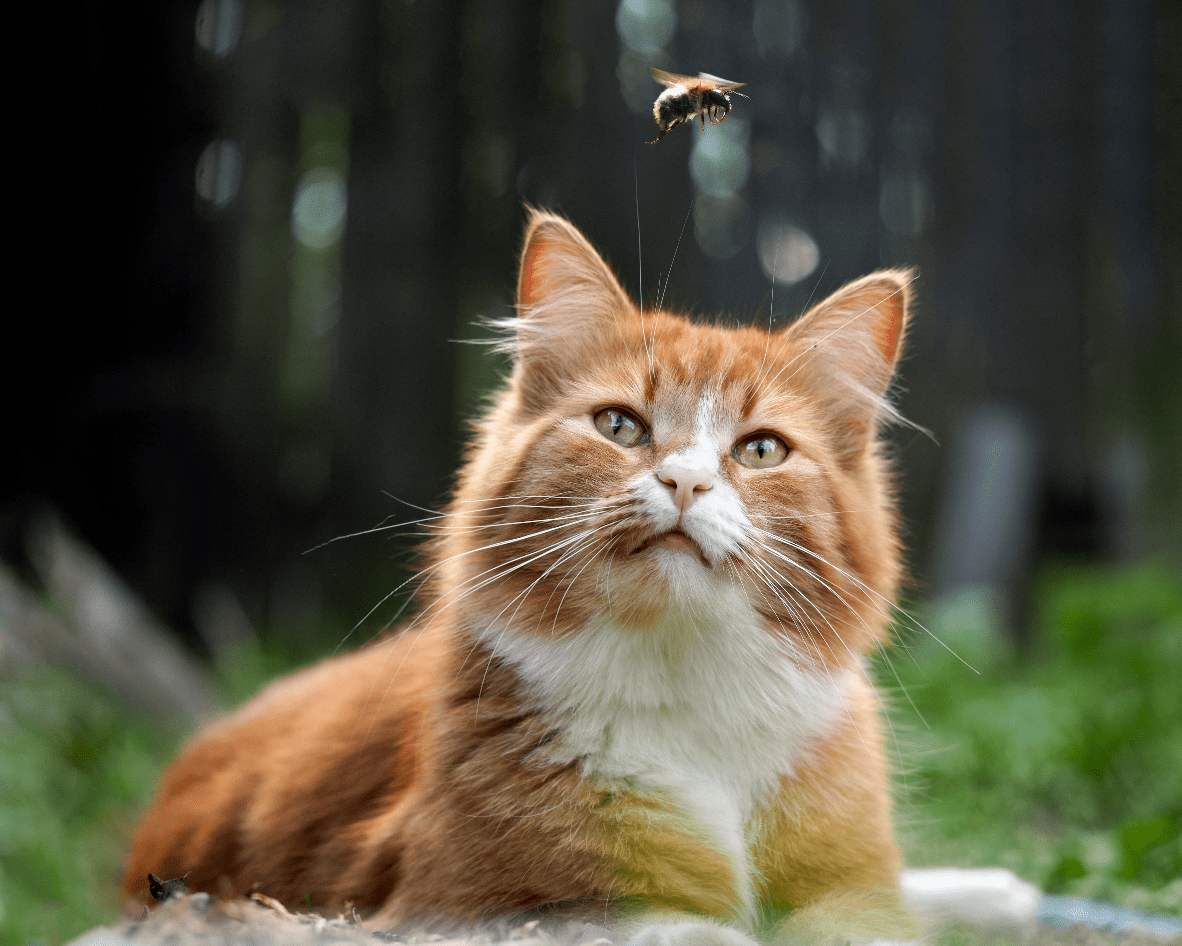Insect bites and stings in cats
Overview
- Insect bites and stings are most likely during the spring, summer and early autumn.
- Most cats get bitten/stung on their face or a paw – this is because they’re usually trying to catch the insect that bites/stings them!
- Fortunately, most stings and bites only cause mild symptoms and can be managed at home.
- However, if your cat has been stung/bitten several times, or appears to be having an allergic reaction you’ll need to contact your vet immediately.

While your cat is exploring outside, they’ll come across all sorts of insects that have the potential to sting and/or bite them, including:
- Bees – bee stings can be very painful and you may see the stinger left behind in your cat.
- Wasps – wasp stings can also be very painful, they can sting multiple times but don’t leave their stinger behind.
- Ticks – ticks that are removed quickly and carefully are unlikely to cause any ongoing problems. Read more in our article ‘Ticks on cats’.
- Mosquitos – mosquito bites don’t often cause serious problems in cats – you may not even notice that they have been bitten.
- Ants – ant bites can sometimes cause small red lumps to appear, but don’t often cause serious problems.
- Flies – similar to other bites, fly bites don’t often cause serious problems in cats. They might appear as red lumps or scabs, and if they are large, may require salt water cleaning.

This cat developed a swollen chin after being stung by a wasp.
Mild reactions
Most bites and stings only cause a mild, local reaction, and can be dealt with at home. Symptoms of a mild reaction include:
- Mild swelling in the affected area.
- Licking, nibbling or pawing the sting site.
- Limping or holding up a paw.
- Drooling.
Severe reactions to bites and stings
Although it’s rare, just like humans, some cats are allergic to stings and bites. This is why it’s important to keep a close eye on your cat if you think they’ve been bitten or stung. If they are having an allergic reaction, you will notice some of the following signs:
- Severe and rapid swelling around the bite/sting site.
- Hives or a severe rash.
- Rapid breathing or breathing difficulties.
- Collapse.
- Vomiting and diarrhoea.
- Check out our article on allergic reactions in cats for more information.
If your cat is having an allergic reaction it’s vital you get them to a vet as soon as possible.
What to do if your cat has been stung/bitten
Make sure to get your cat to a vet as soon as possible if they are having an allergic reaction showing symptoms mentioned previously. However, if they are only showing signs of a mild reaction, follow the steps below:
- Have a look at the affected area, if there is a stinger left behind, try to gently remove it by placing the edge of a credit card under the venom sac (yellowish blob), and very gently scraping it out. Don’t try to squeeze it with tweezers or your fingers as it could release more venom into your cat.
- Place a cold, damp cloth on the affected area to soothe the skin and reduce swelling. Alternatively, you could use an ice pack covered with a tea towel (or similar), but only if your cat is comfortable with you holding it on them.
- Anti-histamines can help reduce swelling but you should contact your vet before giving your cat any medication. Your vet will advise you if an antihistamine is appropriate for your cat, and ensure you are giving the right drug, and dose.
- Monitor closely for signs of an allergic reaction (listed above) – if they are showing any, contact your vet immediately.
- Home remedies, such as vinegar for wasp stings and bicarbonate and water for bee stings do no harm, however, they may not relieve the symptoms as much as we think they do.
Published: August 2023
Did you find this page useful?
Tell us more
Please note, our vets and nurses are unable to respond to questions via this form. If you are concerned about your pet’s health, please contact your vet directly.
Thank you for your feedback
Want to hear more about PDSA and get pet care tips from our vet experts?
Sign up to our e-newsletter
Written by vets and vet nurses. This advice is for UK pets only. Illustrations by Samantha Elmhurst.

